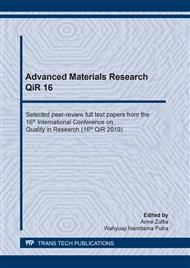p.364
p.375
p.381
p.391
p.398
p.404
p.412
p.419
p.428
Effect of Cooling Rates during a Double Stage Solution Treatment on the Massive Phase Formation in Ti-6Al-4V Alloy
Abstract:
The effect of cooling rates during a double stage solution treatment (DSST) on the volume fraction of the massive phase (αm) in Ti-6Al-4V alloy was successfully confirmed in the present study. The morphology of Ti-6Al-4V alloy depends on the cooling rates during the cooling from the β region. The αm, which has a transformation characteristic between martensite (α′) and α diffusion, is reported to be a potential method for obtaining a fine lamellar α/β by thermal decomposition. The different fraction of αm was found after DSST with the first stage was conducted above the β-transus temperature at 1050 °C, followed by second annealing at different temperatures in the α+β region. It was found that the formation of αm exists in a specific temperature region. A longer period in this region, which was calculated based on different cooling rates during DSST, will increase the fraction of αm in the specimen. All specimens after DSST contain αm with the α width of approximately 1μm and white-dot particles, which is predicted to be V-enriched precipitates. The DSST can be a potential method for producing a high fraction of αm, which can be thermally decomposed into a fine lamellar α/β, introducing a Ti-6Al-4V alloy with superior mechanical properties.
Info:
Periodical:
Pages:
398-403
Citation:
Online since:
July 2020
Authors:
Keywords:
Price:
Сopyright:
© 2020 Trans Tech Publications Ltd. All Rights Reserved
Share:
Citation:


